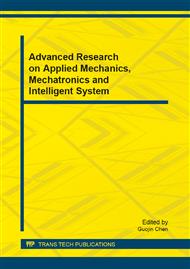p.199
p.205
p.213
p.219
p.226
p.230
p.234
p.238
p.242
Research of Blurred Face Image Detection Based on DCT and Edge Detection Algorithm
Abstract:
Multimedia has been widely used on the mobile platform. Due to its mobility and instability,the mobile terminal inevitably produces some blurred pictures (especially when shooting human faces). Hence, if these blurred and normal images are well classified and separated, it will be significant to improve the browsing efficiency. This paper focuses onresearch of two popular blur detection algorithms, DCT (Discrete Cosine Transform) and edge detection algorithm. It also offers the implementation of the blurred face image detection and classification system based on these two algorithms. At last it contrasts these two algorithms and draws a conclusion.
Info:
Periodical:
Pages:
226-229
Citation:
Online since:
July 2013
Authors:
Keywords:
Price:
Сopyright:
© 2013 Trans Tech Publications Ltd. All Rights Reserved
Share:
Citation:


